William Walker (May 8, 1824 – September 12, 1860) was an American lawyer, journalist and adventurer, who organized several private military expeditions into Latin America,
and adventurer, who organized several private military expeditions into Latin America,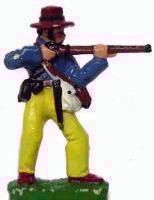 with the intention of establishing English-
with the intention of establishing English-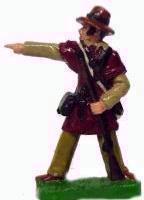 speaking colonies under his personal control
speaking colonies under his personal control you can modify union soldiers to represernt walkers army
you can modify union soldiers to represernt walkers armyWid0WwBR!7wI2(c!~~60_12.JPG)
, an enterprise then known as "filibustering." Walker became president of the Republic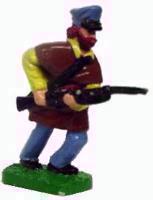 of Nicaragua in 1856 and ruled until 1857, when he was
of Nicaragua in 1856 and ruled until 1857, when he was defeated by a coalition of Central American armies, principally Costa Rica's army. He was executed by the government of Honduras in 1860.
defeated by a coalition of Central American armies, principally Costa Rica's army. He was executed by the government of Honduras in 1860.
 and adventurer, who organized several private military expeditions into Latin America,
and adventurer, who organized several private military expeditions into Latin America, with the intention of establishing English-
with the intention of establishing English- speaking colonies under his personal control
speaking colonies under his personal control you can modify union soldiers to represernt walkers army
you can modify union soldiers to represernt walkers armyWid0WwBR!7wI2(c!~~60_12.JPG)
, an enterprise then known as "filibustering." Walker became president of the Republic
 of Nicaragua in 1856 and ruled until 1857, when he was
of Nicaragua in 1856 and ruled until 1857, when he was defeated by a coalition of Central American armies, principally Costa Rica's army. He was executed by the government of Honduras in 1860.
defeated by a coalition of Central American armies, principally Costa Rica's army. He was executed by the government of Honduras in 1860.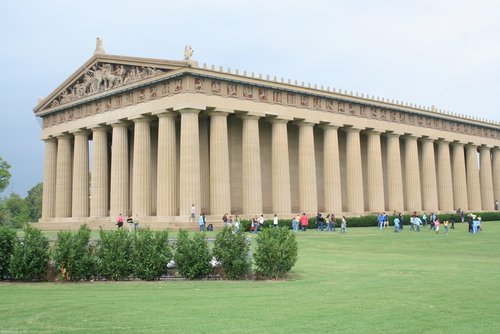
William Walker graduated summa cum laude from the University of Nashville at the age of fourteen. He spent the next two years inEurope, studying medicine at the universities of Edinburgh, Heidelberg, Göttingen,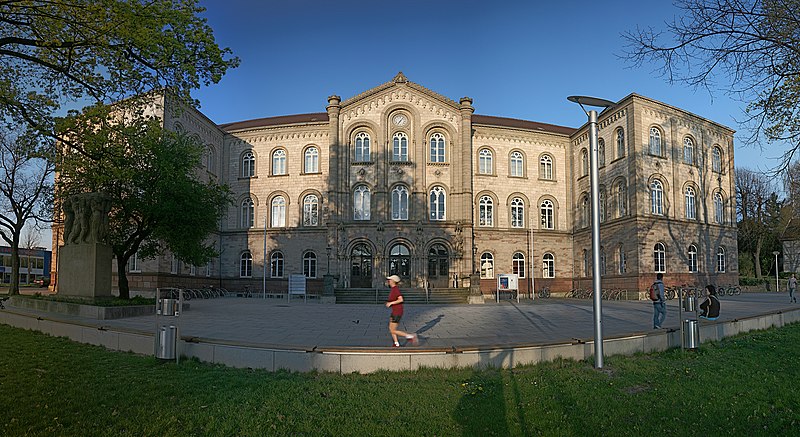 and Paris. The revolutions of 1848 took place during his stay in Europe; the political minds of the time, which include Garibaldi, Marx, Mazzini, Feuerbach, and Blanc, influenced his filibustering aspirations. At the age of 19, he received a medical degree from the University of Pennsylvania and practiced briefly inPhiladelphia before moving to New Orleans to study law.
and Paris. The revolutions of 1848 took place during his stay in Europe; the political minds of the time, which include Garibaldi, Marx, Mazzini, Feuerbach, and Blanc, influenced his filibustering aspirations. At the age of 19, he received a medical degree from the University of Pennsylvania and practiced briefly inPhiladelphia before moving to New Orleans to study law.
 and Paris. The revolutions of 1848 took place during his stay in Europe; the political minds of the time, which include Garibaldi, Marx, Mazzini, Feuerbach, and Blanc, influenced his filibustering aspirations. At the age of 19, he received a medical degree from the University of Pennsylvania and practiced briefly inPhiladelphia before moving to New Orleans to study law.
and Paris. The revolutions of 1848 took place during his stay in Europe; the political minds of the time, which include Garibaldi, Marx, Mazzini, Feuerbach, and Blanc, influenced his filibustering aspirations. At the age of 19, he received a medical degree from the University of Pennsylvania and practiced briefly inPhiladelphia before moving to New Orleans to study law.
He practiced law for a short time, but quit to become co-owner and editor of the New Orleans Crescent. In 1849, he moved to San Francisco, California, where he was a journalist and fought three duels, in two of which he was wounded. Walker now conceived the idea of conquering vast regions of Latin America, where he would create new slave states to join the federal union. These campaigns were known as filibustering or freebooting.]Expedition toMexico
In the summer of 1853, Walker traveled to Guaymas , seeking a grant from the government of Mexico to create a colony that would serve as a fortified frontier, protecting US soil from Indian raids. Mexico refused, and Walker returned to San Francisco determined to obtain his colony, regardless of Mexico's position. He began recruiting from amongst American supporters of slavery and the Manifest Destiny Doctrine, mostly inhabitants of Kentucky and Tennessee. His intentions then changed from forming a buffer colony to establishing an independent Republic of Sonora, which might eventually take its place as a part of the American Union (as had been the case previously with the Republic of Texas). He funded his project by "selling scrips which were redeemable in lands of Sonora."
, seeking a grant from the government of Mexico to create a colony that would serve as a fortified frontier, protecting US soil from Indian raids. Mexico refused, and Walker returned to San Francisco determined to obtain his colony, regardless of Mexico's position. He began recruiting from amongst American supporters of slavery and the Manifest Destiny Doctrine, mostly inhabitants of Kentucky and Tennessee. His intentions then changed from forming a buffer colony to establishing an independent Republic of Sonora, which might eventually take its place as a part of the American Union (as had been the case previously with the Republic of Texas). He funded his project by "selling scrips which were redeemable in lands of Sonora."
 , seeking a grant from the government of Mexico to create a colony that would serve as a fortified frontier, protecting US soil from Indian raids. Mexico refused, and Walker returned to San Francisco determined to obtain his colony, regardless of Mexico's position. He began recruiting from amongst American supporters of slavery and the Manifest Destiny Doctrine, mostly inhabitants of Kentucky and Tennessee. His intentions then changed from forming a buffer colony to establishing an independent Republic of Sonora, which might eventually take its place as a part of the American Union (as had been the case previously with the Republic of Texas). He funded his project by "selling scrips which were redeemable in lands of Sonora."
, seeking a grant from the government of Mexico to create a colony that would serve as a fortified frontier, protecting US soil from Indian raids. Mexico refused, and Walker returned to San Francisco determined to obtain his colony, regardless of Mexico's position. He began recruiting from amongst American supporters of slavery and the Manifest Destiny Doctrine, mostly inhabitants of Kentucky and Tennessee. His intentions then changed from forming a buffer colony to establishing an independent Republic of Sonora, which might eventually take its place as a part of the American Union (as had been the case previously with the Republic of Texas). He funded his project by "selling scrips which were redeemable in lands of Sonora."
On October 15, 1853, Walker set out with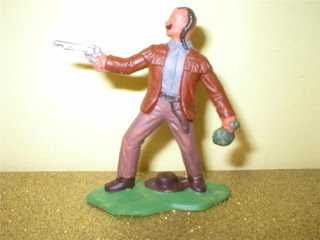 45 men to conquer the Mexican territories of Baja California and Sonora.
45 men to conquer the Mexican territories of Baja California and Sonora. He succeeded in capturing La Paz
He succeeded in capturing La Paz , the capital of sparsely populated Baja California, which he declared the capital of a new Republic of Lower California
, the capital of sparsely populated Baja California, which he declared the capital of a new Republic of Lower California , with himself as president and his partner, Watkins, as vice president; he then put the region under the laws of the American state of Louisiana, which made slavery legal. He moved his headquarters to Ensenada to maintain a more secure position of operations. Although he never gained control of Sonora, less than three months later, he pronounced Baja California part of the larger Republic of Sonora
, with himself as president and his partner, Watkins, as vice president; he then put the region under the laws of the American state of Louisiana, which made slavery legal. He moved his headquarters to Ensenada to maintain a more secure position of operations. Although he never gained control of Sonora, less than three months later, he pronounced Baja California part of the larger Republic of Sonora
 45 men to conquer the Mexican territories of Baja California and Sonora.
45 men to conquer the Mexican territories of Baja California and Sonora. He succeeded in capturing La Paz
He succeeded in capturing La Paz , the capital of sparsely populated Baja California, which he declared the capital of a new Republic of Lower California
, the capital of sparsely populated Baja California, which he declared the capital of a new Republic of Lower California , with himself as president and his partner, Watkins, as vice president; he then put the region under the laws of the American state of Louisiana, which made slavery legal. He moved his headquarters to Ensenada to maintain a more secure position of operations. Although he never gained control of Sonora, less than three months later, he pronounced Baja California part of the larger Republic of Sonora
, with himself as president and his partner, Watkins, as vice president; he then put the region under the laws of the American state of Louisiana, which made slavery legal. He moved his headquarters to Ensenada to maintain a more secure position of operations. Although he never gained control of Sonora, less than three months later, he pronounced Baja California part of the larger Republic of Sonora
Lack of supplies and unexpectedly strong resistance by the Mexican government quickly forced Walker to retreat. Back in California, he was put on trial for conducting an illegal war, in violation of the Neutrality Act of 1794. In the era of Manifest Destiny, his filibustering project was popular in the southern and western United States and the jury took eight minutes to acquit him
Conquest of Nicaragua
Since there was no inter-oceanic route joining the Atlantic and Pacific Oceans at the time, and the transcontinental railway had not been completed, a major trade route between New York City and San Francisco ran through southern Nicaragua. Ships from New York would enter the San Juan River from the Atlantic and sail across Lake Nicaragua. People and goods would then be transported by stagecoach over a narrow strip of land near the city of Rivas
People and goods would then be transported by stagecoach over a narrow strip of land near the city of Rivas , before reaching the Pacific and being shipped to San Francisco. The commercial exploitation of this route had been granted by Nicaragua to the Accessory Transit Company, controlled by Wall Street tycoon Cornelius Vanderbilt
, before reaching the Pacific and being shipped to San Francisco. The commercial exploitation of this route had been granted by Nicaragua to the Accessory Transit Company, controlled by Wall Street tycoon Cornelius Vanderbilt (see also Nicaragua Canal)
(see also Nicaragua Canal) .
.
 People and goods would then be transported by stagecoach over a narrow strip of land near the city of Rivas
People and goods would then be transported by stagecoach over a narrow strip of land near the city of Rivas , before reaching the Pacific and being shipped to San Francisco. The commercial exploitation of this route had been granted by Nicaragua to the Accessory Transit Company, controlled by Wall Street tycoon Cornelius Vanderbilt
, before reaching the Pacific and being shipped to San Francisco. The commercial exploitation of this route had been granted by Nicaragua to the Accessory Transit Company, controlled by Wall Street tycoon Cornelius Vanderbilt (see also Nicaragua Canal)
(see also Nicaragua Canal) .
.
In 1854, a civil war erupted in Nicaragua between the Legitimist party (also called the Conservative party), based in the city of Granada, and the Democratic party (also called the Liberal party), based in León.
and the Democratic party (also called the Liberal party), based in León. The Democratic party sought military support from Walker who, to circumvent U.S. neutrality laws, obtained a contract from Democratic president Francisco Castellón to bring as many as three hundred "colonists" to Nicaragua. These mercenaries received the right to bear arms in the service of the Democratic government. Walker sailed from San Francisco on May 3, 1855, with approximately 60 men. Upon landing, the force was reinforced by 170 locals and about 100 Americans, including the well-known explorer and journalist Charles Wilkins Webber and the English adventurer Charles Frederick Henningsen, a veteran of the First Carlist War, the Hungarian Revolution, and the war in Circassia
The Democratic party sought military support from Walker who, to circumvent U.S. neutrality laws, obtained a contract from Democratic president Francisco Castellón to bring as many as three hundred "colonists" to Nicaragua. These mercenaries received the right to bear arms in the service of the Democratic government. Walker sailed from San Francisco on May 3, 1855, with approximately 60 men. Upon landing, the force was reinforced by 170 locals and about 100 Americans, including the well-known explorer and journalist Charles Wilkins Webber and the English adventurer Charles Frederick Henningsen, a veteran of the First Carlist War, the Hungarian Revolution, and the war in Circassia .
.
 and the Democratic party (also called the Liberal party), based in León.
and the Democratic party (also called the Liberal party), based in León. The Democratic party sought military support from Walker who, to circumvent U.S. neutrality laws, obtained a contract from Democratic president Francisco Castellón to bring as many as three hundred "colonists" to Nicaragua. These mercenaries received the right to bear arms in the service of the Democratic government. Walker sailed from San Francisco on May 3, 1855, with approximately 60 men. Upon landing, the force was reinforced by 170 locals and about 100 Americans, including the well-known explorer and journalist Charles Wilkins Webber and the English adventurer Charles Frederick Henningsen, a veteran of the First Carlist War, the Hungarian Revolution, and the war in Circassia
The Democratic party sought military support from Walker who, to circumvent U.S. neutrality laws, obtained a contract from Democratic president Francisco Castellón to bring as many as three hundred "colonists" to Nicaragua. These mercenaries received the right to bear arms in the service of the Democratic government. Walker sailed from San Francisco on May 3, 1855, with approximately 60 men. Upon landing, the force was reinforced by 170 locals and about 100 Americans, including the well-known explorer and journalist Charles Wilkins Webber and the English adventurer Charles Frederick Henningsen, a veteran of the First Carlist War, the Hungarian Revolution, and the war in Circassia .
.
With Castellón's consent, Walker attacked the Legitimists in the town of Rivas, near the trans-isthmian route. He was driven off, but not without inflicting heavy casualties. On September 4, during the Battle of La Virgen, Walker defeated the Legitimist army. On October 13, he conquered the Legitimist capital of Granada and took effective control of the country. Initially, as commander of the army,
On September 4, during the Battle of La Virgen, Walker defeated the Legitimist army. On October 13, he conquered the Legitimist capital of Granada and took effective control of the country. Initially, as commander of the army, Walker ruled Nicaragua through provisional President Patricio Rivas.U.S. President Franklin Pierce recognized Walker's regime as the legitimate government of Nicaragua on May 20, 1856.
Walker ruled Nicaragua through provisional President Patricio Rivas.U.S. President Franklin Pierce recognized Walker's regime as the legitimate government of Nicaragua on May 20, 1856.
Walker's first ambassadorial appointment, Colonel Parker H. French, was refused recognition.
 On September 4, during the Battle of La Virgen, Walker defeated the Legitimist army. On October 13, he conquered the Legitimist capital of Granada and took effective control of the country. Initially, as commander of the army,
On September 4, during the Battle of La Virgen, Walker defeated the Legitimist army. On October 13, he conquered the Legitimist capital of Granada and took effective control of the country. Initially, as commander of the army, Walker ruled Nicaragua through provisional President Patricio Rivas.U.S. President Franklin Pierce recognized Walker's regime as the legitimate government of Nicaragua on May 20, 1856.
Walker ruled Nicaragua through provisional President Patricio Rivas.U.S. President Franklin Pierce recognized Walker's regime as the legitimate government of Nicaragua on May 20, 1856.
Walker's first ambassadorial appointment, Colonel Parker H. French, was refused recognition.
Meanwhile, C.K. Garrison and Charles Morgan, subordinates of Cornelius Vanderbilt's Accessory Transit Company, provided financial and logistic assistance to the filibusters in exchange for Walker, as ruler of Nicaragua, seizing the Company's property (on the pretext of a charter violation) and turning it over to Garrison and Morgan. Outraged, Vanderbilt dispatched two secret agents to the Costa Rican government with detailed plans on how to deal a death blow to the filibusters. They would help regain control of Vanderbilt's steamboats which had become a logistical life line for Walker's army.
Walker had also scared his neighbors and potential American and European investors with talk of further military conquests in Central America. Juan Rafael Mora,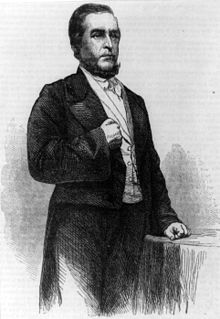 President of Costa Rica, rejected Walker's diplomatic overtures and instead declared war on his regime, the Campaign of 1856–1857.
President of Costa Rica, rejected Walker's diplomatic overtures and instead declared war on his regime, the Campaign of 1856–1857. Walker sent Colonel Schlessinger to invade Costa Rica in a preemptive action, but his forces were defeated at the Battle of Santa Rosa in March 1856. In April 1856, Costa Rican troops penetrated into Nicaraguan territory and inflicted a defeat on Walker's men at the Second Battle of Rivas, in which Juan Santamaría, later to be recognized as one of Costa Rica's national heroes, played a key role.
Walker sent Colonel Schlessinger to invade Costa Rica in a preemptive action, but his forces were defeated at the Battle of Santa Rosa in March 1856. In April 1856, Costa Rican troops penetrated into Nicaraguan territory and inflicted a defeat on Walker's men at the Second Battle of Rivas, in which Juan Santamaría, later to be recognized as one of Costa Rica's national heroes, played a key role.
 President of Costa Rica, rejected Walker's diplomatic overtures and instead declared war on his regime, the Campaign of 1856–1857.
President of Costa Rica, rejected Walker's diplomatic overtures and instead declared war on his regime, the Campaign of 1856–1857. Walker sent Colonel Schlessinger to invade Costa Rica in a preemptive action, but his forces were defeated at the Battle of Santa Rosa in March 1856. In April 1856, Costa Rican troops penetrated into Nicaraguan territory and inflicted a defeat on Walker's men at the Second Battle of Rivas, in which Juan Santamaría, later to be recognized as one of Costa Rica's national heroes, played a key role.
Walker sent Colonel Schlessinger to invade Costa Rica in a preemptive action, but his forces were defeated at the Battle of Santa Rosa in March 1856. In April 1856, Costa Rican troops penetrated into Nicaraguan territory and inflicted a defeat on Walker's men at the Second Battle of Rivas, in which Juan Santamaría, later to be recognized as one of Costa Rica's national heroes, played a key role.
From the north, President Jose Santos Guardiola sent Honduran troops to fight William Walker under the leadership of the Xatruch brothers. Florencio Xatruch
sent Honduran troops to fight William Walker under the leadership of the Xatruch brothers. Florencio Xatruch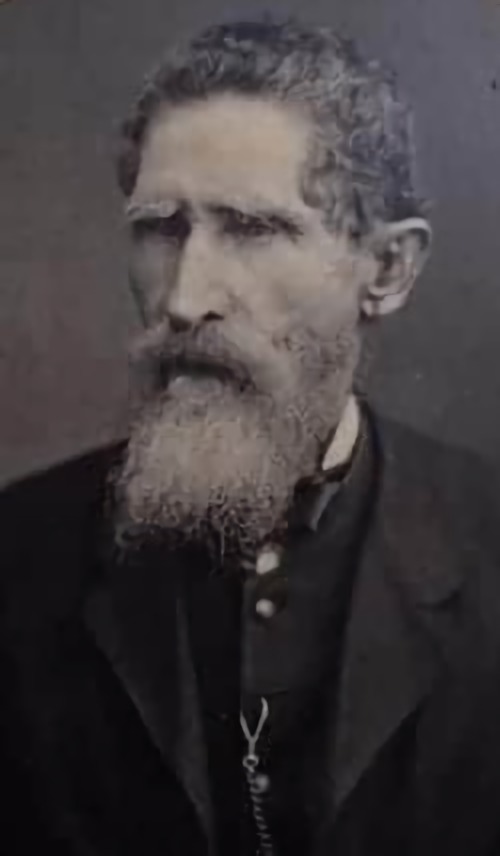 was named General in Chief of the Allied Armies of Central America. He also led the combat against the filibusters in la Puebla, Rivas. Later, for political reasons, Juan Rafael Mora was left in charge. Several Central American countries recognized Xatruch as Brigade and Division General. On June 12, 1857, Xatruch made a triumphant entrance to Comayagua
was named General in Chief of the Allied Armies of Central America. He also led the combat against the filibusters in la Puebla, Rivas. Later, for political reasons, Juan Rafael Mora was left in charge. Several Central American countries recognized Xatruch as Brigade and Division General. On June 12, 1857, Xatruch made a triumphant entrance to Comayagua , which was then the capital of Honduras, after Walker surrendered. The nickname by which Hondurans are known popularly still today, Catracho, is derived from Xatruch's figure and successful campaign as leader of the Allied Armies of Central America. As the general and his soldiers returned from battle, some Nicaraguans would affectionately yell out ¡Vienen los xatruches!, meaning "Here come Xatruch's boys!"
, which was then the capital of Honduras, after Walker surrendered. The nickname by which Hondurans are known popularly still today, Catracho, is derived from Xatruch's figure and successful campaign as leader of the Allied Armies of Central America. As the general and his soldiers returned from battle, some Nicaraguans would affectionately yell out ¡Vienen los xatruches!, meaning "Here come Xatruch's boys!" However, Nicaraguans had so much trouble pronouncing the general's last name (a Catalan last name) that they altered the phrase to "los catruches" and ultimately settled on "los catrachos".
However, Nicaraguans had so much trouble pronouncing the general's last name (a Catalan last name) that they altered the phrase to "los catruches" and ultimately settled on "los catrachos".
 sent Honduran troops to fight William Walker under the leadership of the Xatruch brothers. Florencio Xatruch
sent Honduran troops to fight William Walker under the leadership of the Xatruch brothers. Florencio Xatruch was named General in Chief of the Allied Armies of Central America. He also led the combat against the filibusters in la Puebla, Rivas. Later, for political reasons, Juan Rafael Mora was left in charge. Several Central American countries recognized Xatruch as Brigade and Division General. On June 12, 1857, Xatruch made a triumphant entrance to Comayagua
was named General in Chief of the Allied Armies of Central America. He also led the combat against the filibusters in la Puebla, Rivas. Later, for political reasons, Juan Rafael Mora was left in charge. Several Central American countries recognized Xatruch as Brigade and Division General. On June 12, 1857, Xatruch made a triumphant entrance to Comayagua , which was then the capital of Honduras, after Walker surrendered. The nickname by which Hondurans are known popularly still today, Catracho, is derived from Xatruch's figure and successful campaign as leader of the Allied Armies of Central America. As the general and his soldiers returned from battle, some Nicaraguans would affectionately yell out ¡Vienen los xatruches!, meaning "Here come Xatruch's boys!"
, which was then the capital of Honduras, after Walker surrendered. The nickname by which Hondurans are known popularly still today, Catracho, is derived from Xatruch's figure and successful campaign as leader of the Allied Armies of Central America. As the general and his soldiers returned from battle, some Nicaraguans would affectionately yell out ¡Vienen los xatruches!, meaning "Here come Xatruch's boys!" However, Nicaraguans had so much trouble pronouncing the general's last name (a Catalan last name) that they altered the phrase to "los catruches" and ultimately settled on "los catrachos".
However, Nicaraguans had so much trouble pronouncing the general's last name (a Catalan last name) that they altered the phrase to "los catruches" and ultimately settled on "los catrachos".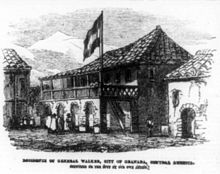 Walker's house in Granada
Walker's house in GranadaWalker took up residence in Granada and set himself up as President of Nicaragua, after conducting a fraudulent election. He was inaugurated on July 12, 1856, and soon launched an Americanization program, reinstating slavery, declaring English an official language and reorganizing currency and fiscal policy to encourage immigration from the United States. Realizing that his position was becoming precarious, he sought support from the Southerners in the U.S. by recasting his campaign as a fight to spread the institution of black slavery, which many American Southern businessmen saw as the basis of their agrarian economy. With this in mind, Walker revoked Nicaragua's emancipation edict of 1824. This move did increase Walker's popularity in the South and attracted the attention of Pierre Soulé,
 an influential New Orleans politician, who campaigned to raise support for Walker's war. Nevertheless, Walker's army, weakened by an epidemic of cholera and massive defections, was no match for the Central American coalition. On December 14, 1856 as Granada was surrounded by 4,000 Honduran, Salvadoran and Guatemalan troops, Charles Frederick Henningsen
an influential New Orleans politician, who campaigned to raise support for Walker's war. Nevertheless, Walker's army, weakened by an epidemic of cholera and massive defections, was no match for the Central American coalition. On December 14, 1856 as Granada was surrounded by 4,000 Honduran, Salvadoran and Guatemalan troops, Charles Frederick Henningsen , one of Walker's generals, ordered his men to set the city ablaze before escaping and fighting their way to Lake Nicaragua. An inscription on a lance reading Aquí fue Granada ("Here was Granada") was left behind at the smoking ruin of the ancient capital city.
, one of Walker's generals, ordered his men to set the city ablaze before escaping and fighting their way to Lake Nicaragua. An inscription on a lance reading Aquí fue Granada ("Here was Granada") was left behind at the smoking ruin of the ancient capital city.
On May 1, 1857, Walker surrendered to Commander Charles Henry Davis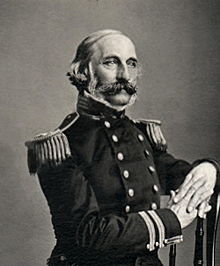 of the United States Navy under the pressure of the Central American armies, and was repatriated. Upon disembarking in New York City, he was greeted as a hero, but he alienated public opinion when he blamed his defeat on the U.S. Navy. Within six months, he set off on another expedition, but he was arrested by the U.S. Navy Home Squadron under the command of Commodore Hiram Paulding and
of the United States Navy under the pressure of the Central American armies, and was repatriated. Upon disembarking in New York City, he was greeted as a hero, but he alienated public opinion when he blamed his defeat on the U.S. Navy. Within six months, he set off on another expedition, but he was arrested by the U.S. Navy Home Squadron under the command of Commodore Hiram Paulding and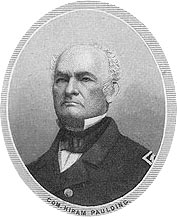 once again returned to the U.S. amid considerable public controversy over the legality of the Navy's actions
once again returned to the U.S. amid considerable public controversy over the legality of the Navy's actions
Death in Honduras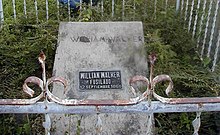 Walker's grave in the Old Trujillo Cemetery, Colón, Honduras
Walker's grave in the Old Trujillo Cemetery, Colón, Honduras
than return him to the US, Salmon delivered Walker to the Honduran authorities in Trujillo, who executed him near the site of the present-day hospital by firing squad on September 12, 1860. Walker was 36 years old. He is buried in the Cementerio Viejo, in After writing an account of his Central American campaign (published in 1860 as War in Nicaragua), Walker once again returned to the region. British colonists in
After writing an account of his Central American campaign (published in 1860 as War in Nicaragua), Walker once again returned to the region. British colonists in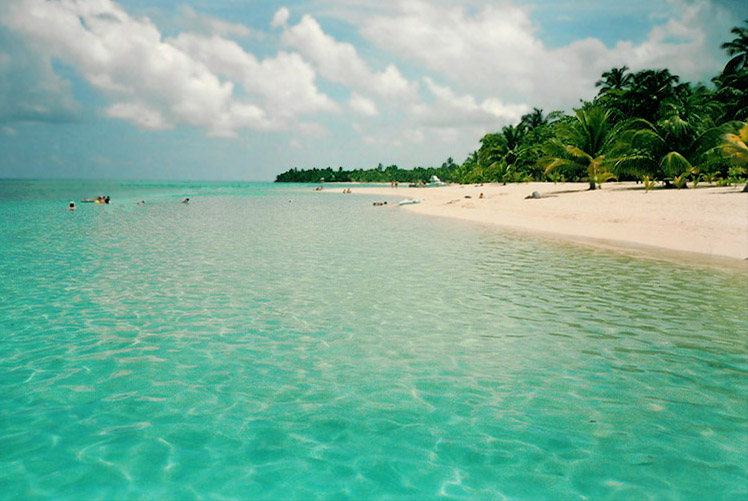 Roatán, in the Bay Islands
Roatán, in the Bay Islands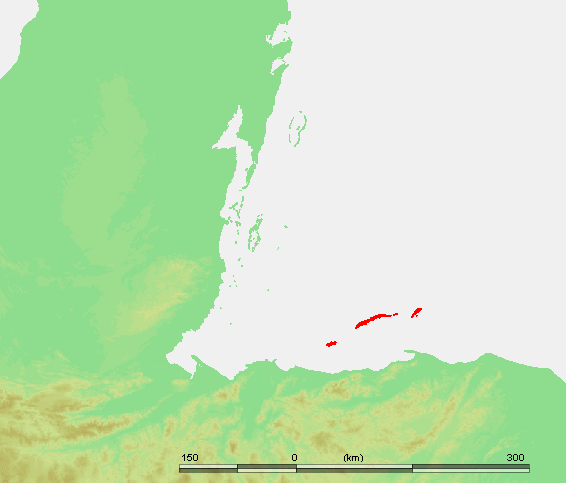 , fearing that the government of Honduras would move to assert its control over them, approached Walker with an offer to help him in establishing a separate, English-speaking government over the islands. Walker disembarked in the port city of Trujillo, but soon fell into the custody of Captain Nowell Salmon
, fearing that the government of Honduras would move to assert its control over them, approached Walker with an offer to help him in establishing a separate, English-speaking government over the islands. Walker disembarked in the port city of Trujillo, but soon fell into the custody of Captain Nowell Salmon (later Admiral Sir Nowell Salmon of the British Royal Navy.
(later Admiral Sir Nowell Salmon of the British Royal Navy. The British government controlled the neighboring regions of British Honduras
The British government controlled the neighboring regions of British Honduras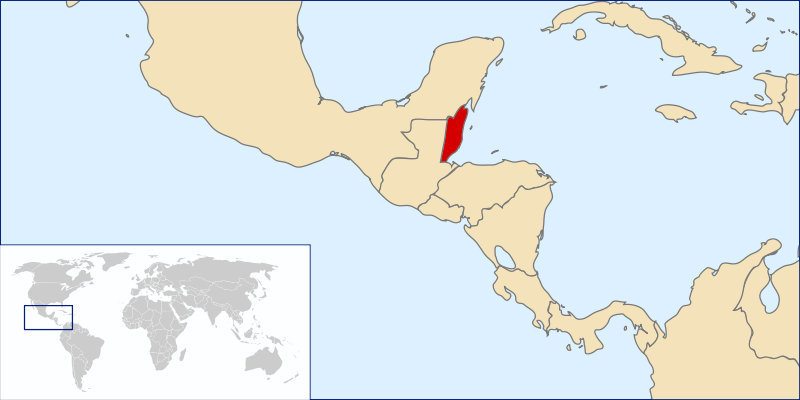 (now Belize) and the Mosquito Coast
(now Belize) and the Mosquito Coast (now part of Nicaragua) and had considerable strategic and economic interest in the construction of an inter-oceanic canal through Central America. It therefore regarded Walker as a menace to its own affairs in the region.Influence and reputation
(now part of Nicaragua) and had considerable strategic and economic interest in the construction of an inter-oceanic canal through Central America. It therefore regarded Walker as a menace to its own affairs in the region.Influence and reputation
 of the United States Navy under the pressure of the Central American armies, and was repatriated. Upon disembarking in New York City, he was greeted as a hero, but he alienated public opinion when he blamed his defeat on the U.S. Navy. Within six months, he set off on another expedition, but he was arrested by the U.S. Navy Home Squadron under the command of Commodore Hiram Paulding and
of the United States Navy under the pressure of the Central American armies, and was repatriated. Upon disembarking in New York City, he was greeted as a hero, but he alienated public opinion when he blamed his defeat on the U.S. Navy. Within six months, he set off on another expedition, but he was arrested by the U.S. Navy Home Squadron under the command of Commodore Hiram Paulding and once again returned to the U.S. amid considerable public controversy over the legality of the Navy's actions
once again returned to the U.S. amid considerable public controversy over the legality of the Navy's actionsDeath in Honduras
 Walker's grave in the Old Trujillo Cemetery, Colón, Honduras
Walker's grave in the Old Trujillo Cemetery, Colón, Honduras
than return him to the US, Salmon delivered Walker to the Honduran authorities in Trujillo, who executed him near the site of the present-day hospital by firing squad on September 12, 1860. Walker was 36 years old. He is buried in the Cementerio Viejo, in
 After writing an account of his Central American campaign (published in 1860 as War in Nicaragua), Walker once again returned to the region. British colonists in
After writing an account of his Central American campaign (published in 1860 as War in Nicaragua), Walker once again returned to the region. British colonists in Roatán, in the Bay Islands
Roatán, in the Bay Islands (later Admiral Sir Nowell Salmon of the British Royal Navy.
(later Admiral Sir Nowell Salmon of the British Royal Navy. The British government controlled the neighboring regions of British Honduras
The British government controlled the neighboring regions of British Honduras (now Belize) and the Mosquito Coast
(now Belize) and the Mosquito Coast (now part of Nicaragua) and had considerable strategic and economic interest in the construction of an inter-oceanic canal through Central America. It therefore regarded Walker as a menace to its own affairs in the region.Influence and reputation
(now part of Nicaragua) and had considerable strategic and economic interest in the construction of an inter-oceanic canal through Central America. It therefore regarded Walker as a menace to its own affairs in the region.Influence and reputation
William Walker convinced many Southerners of the desirability of creating a slave-holding empire in tropical Latin America. In 1861, when U.S. Senator John J. Crittenden proposed that the 36°30' parallel north be declared as a line of demarcation between free and slave territories, some Republicans denounced such an arrangement, saying that it "would amount to a perpetual covenant of war against every people, tribe, and State owning a foot of land between here and Tierra del Fuego
proposed that the 36°30' parallel north be declared as a line of demarcation between free and slave territories, some Republicans denounced such an arrangement, saying that it "would amount to a perpetual covenant of war against every people, tribe, and State owning a foot of land between here and Tierra del Fuego
 proposed that the 36°30' parallel north be declared as a line of demarcation between free and slave territories, some Republicans denounced such an arrangement, saying that it "would amount to a perpetual covenant of war against every people, tribe, and State owning a foot of land between here and Tierra del Fuego
proposed that the 36°30' parallel north be declared as a line of demarcation between free and slave territories, some Republicans denounced such an arrangement, saying that it "would amount to a perpetual covenant of war against every people, tribe, and State owning a foot of land between here and Tierra del Fuego
Before the end of the American Civil War, Walker's memory enjoyed great popularity in the southern and western United States, where he was known as "General Walker" and as the "grey-eyed man of destiny." Northerners, on the other hand, generally regarded him as a pirate. Despite his intelligence and personal charm, Walker consistently proved to be a limited military and political leader. Unlike men of similar ambition, such as Cecil Rhodes, Walker's grandiose scheming ultimately failed.
In Central American countries, the successful military campaign of 1856-1857 against William Walker became a source of national pride and identity, and it was later promoted by local historians and politicians as substitute for the war of independence that Central America had not experienced. April 11 is a Costa Rican national holiday in memory of Walker's defeat The Second Battle of Rivas occurred on 11 April 1856 between Costa Rican militia under General Mora and the Nicaraguan forces ofWilliam Walker. The lesser known First Battle of Rivas took place on 29 June 1855 between Walker's forces and the forces of the Chamorro government of Nicaraguaat Rivas.
defeat The Second Battle of Rivas occurred on 11 April 1856 between Costa Rican militia under General Mora and the Nicaraguan forces ofWilliam Walker. The lesser known First Battle of Rivas took place on 29 June 1855 between Walker's forces and the forces of the Chamorro government of Nicaraguaat Rivas.  Juan Santamaría, who played a key role in that battle, is honored as one of the two Costa Rican national heroes, the other one being Juan Rafael Mora himself.starring Ed Harris.
Juan Santamaría, who played a key role in that battle, is honored as one of the two Costa Rican national heroes, the other one being Juan Rafael Mora himself.starring Ed Harris.
 defeat The Second Battle of Rivas occurred on 11 April 1856 between Costa Rican militia under General Mora and the Nicaraguan forces ofWilliam Walker. The lesser known First Battle of Rivas took place on 29 June 1855 between Walker's forces and the forces of the Chamorro government of Nicaraguaat Rivas.
defeat The Second Battle of Rivas occurred on 11 April 1856 between Costa Rican militia under General Mora and the Nicaraguan forces ofWilliam Walker. The lesser known First Battle of Rivas took place on 29 June 1855 between Walker's forces and the forces of the Chamorro government of Nicaraguaat Rivas.  Juan Santamaría, who played a key role in that battle, is honored as one of the two Costa Rican national heroes, the other one being Juan Rafael Mora himself.starring Ed Harris.
Juan Santamaría, who played a key role in that battle, is honored as one of the two Costa Rican national heroes, the other one being Juan Rafael Mora himself.starring Ed Harris.
Although Walker is far better known today in Central America than he is in the United States, he does have a number of interesting ties to Nashville, Tennessee, the city of his birth. Locally, Walker is remembered as the only native Nashvillian ever to become a head of state, and a historical marker commemorates his birthplace, downtown not far from Second AvenuesWalker's campaign has inspired two films, both of which take considerable liberties with his story: Burn! (1969) starring Marlon Brando, and Walker (1987) 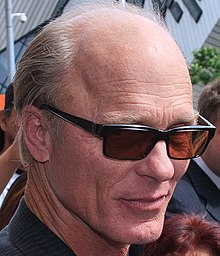 starring Ed Harris. Walker's name is used for the main character in Burn!, though the character is not meant to represent the historical William Walker and is portrayed as British. On the other hand,Alex Cox's Walker incorporates many of the signposts of William Walker's life and exploits, from his original excursions into northern Mexico to his trial and acquittal on breaking the neutrality act to the triumph of his assault on Nicaragua and his execution.
starring Ed Harris. Walker's name is used for the main character in Burn!, though the character is not meant to represent the historical William Walker and is portrayed as British. On the other hand,Alex Cox's Walker incorporates many of the signposts of William Walker's life and exploits, from his original excursions into northern Mexico to his trial and acquittal on breaking the neutrality act to the triumph of his assault on Nicaragua and his execution.
 starring Ed Harris. Walker's name is used for the main character in Burn!, though the character is not meant to represent the historical William Walker and is portrayed as British. On the other hand,Alex Cox's Walker incorporates many of the signposts of William Walker's life and exploits, from his original excursions into northern Mexico to his trial and acquittal on breaking the neutrality act to the triumph of his assault on Nicaragua and his execution.
starring Ed Harris. Walker's name is used for the main character in Burn!, though the character is not meant to represent the historical William Walker and is portrayed as British. On the other hand,Alex Cox's Walker incorporates many of the signposts of William Walker's life and exploits, from his original excursions into northern Mexico to his trial and acquittal on breaking the neutrality act to the triumph of his assault on Nicaragua and his execution.
In Part Five, Chapter 48, of Gone with the Wind, Margaret Mitchell cites William Walker, "and how he died against a wall in Truxillo," as topic of conversation between Rhett Butler and his filibustering acquaintances, while Rhett and Scarlett are on honeymoon in New Orleans.
as topic of conversation between Rhett Butler and his filibustering acquaintances, while Rhett and Scarlett are on honeymoon in New Orleans.
 as topic of conversation between Rhett Butler and his filibustering acquaintances, while Rhett and Scarlett are on honeymoon in New Orleans.
as topic of conversation between Rhett Butler and his filibustering acquaintances, while Rhett and Scarlett are on honeymoon in New Orleans.
No comments:
Post a Comment